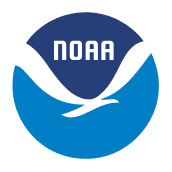Experimental smoke model provides early warning of wide-reaching impacts

Days before the Midwest and Eastern regions of the U.S. were impacted by dense smoke, haze, and poor air quality, GSL’s Rapid Refresh Forecast System (RRFS) Smoke model drew forecaster attention to the potential spread of the smoke plume. Early indications like this can give meteorologists the confidence to alert state and local health and air quality officials about possible health risks to susceptible members of the public ahead of time. This information is also crucial for predicting potential visibility impacts to transportation and commerce.
As wildfires raged across central Canada in late May, dense smoke was transported north- and eastward away from the U.S. However, following a cold front, winds shifted toward the south, and the smoke plume was carried into Minnesota, the Dakotas, and beyond. By June 2, smoke and haze filled the sky across the eastern U.S., all the way to the Atlantic coast.
RRFS-Smoke is an experimental forecast model developed by GSL that is available for forecasters to use. It shows potential to be an improvement over the High-Resolution Rapid Refresh (HRRR) Smoke model, which was made operational in December 2020 and has become a go-to for air quality forecasters nationwide.
While HRRR-Smoke models smoke concentrations across the contiguous U.S., it relies on another modeling system for smoke transported outside the CONUS domain. RRFS covers the entirety of North America at high resolution (3 km), allowing the model to more accurately track smoke emitted from fires across the entire continent and its surrounding waters. It utilizes satellite observations (in particular datasets generated by NESDIS) to identify fires and uses forecasts of weather conditions to predict the behavior of the smoke plumes. It produces forecasts of both near-surface smoke, which is most hazardous to health, and vertically-integrated smoke, which includes smoke throughout all levels of the atmosphere.

RRFS-Smoke produces new forecast products every hour. Most forecasts go out to 18 hours, and four times a day (00, 06, 12 and 18Z), the forecasts go out to 3 days. This helps to provide the forecasters with critical information on incidents like smoke transport, which can be multi-day air pollution episodes affecting millions of people across the country.
Smoke concentrations from RRFS-Smoke are also incorporated in RRFS surface visibility forecasts. Together with a new Hourly Wildfire Potential Index, RRFS has the ability to aid forecasters in predicting new fires, smoke distribution, and visibility impacts.
The entire experimental RRFS suite of forecasts are publicly available at https://rapidrefresh.noaa.gov/RRFS/. With the GSL’s latest release of the Dynamic Ensemble Scenarios for Impact-based decision support (DESI) tool, the data can also be visualized and analyzed on that platform.
RRFS-Smoke is being evaluated for a potential transition into National Weather Service operations, and GSL researchers are continuing to develop additional capabilities to improve its forecast skill.

Our Mission
Lead research and directed development through the transition of environmental data, models, products, tools, and services to support commerce, protect life and property, and promote a scientifically literate public.
Research Areas
Organizational Excellence, Earth System Prediction, Advanced Technologies, and Decision Support are the foundation to achieving the GSL Grand Challenge: Deliver actionable global storm-scale prediction and environmental information through advanced technologies to serve society.
Global Systems Laboratory

